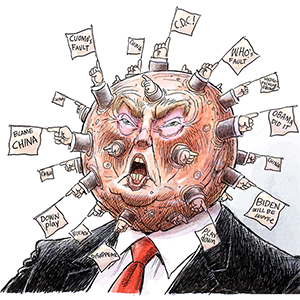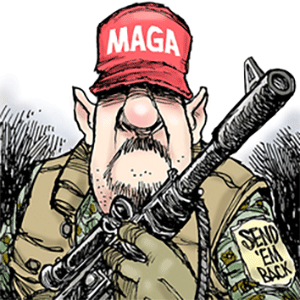Ask The Vet: Praise Cat While Trimming Claws
Q: I recently adopted a cat named Max, and I need to learn about trimming his claws. What's the procedure, and how often should it be done?
A: Start by choosing whatever equipment is most comfortable for you. I use human toenail trimmers, but many people prefer cat claw trimmers from the pet supply store.
If you are right-handed, hold Max close to your body with your left arm. Gently press your left thumb above and your left forefinger beneath one of Max's front toes, and the claw will emerge.
Clip off the clear, curved hook without cutting into the sensitive, pink quick.
As you trim each claw, praise Max. After you've clipped the claws on one paw, pet him before you start the other front paw.
The rear claws are not hooked, and cats don't use their hind paws to scratch, so many people don't bother to trim these claws. But if you wish to, repeat the procedure on each hind paw.
After Max's pedicure, reward him with snuggle time and a kitty treat. Repeat his pedicures monthly.
Until you grow confident with claw trimming, you may need someone else to cuddle Max while you do his pedicure. Eventually, you'll be able to hold him and trim his claws by yourself.
You may be surprised to learn that cats' claws differ from the nails that humans and dogs possess. A claw is retracted at rest, hidden inside the toe until it's needed for climbing, grasping prey or fighting. Moreover, while human and canine nails grow continuously, cats shed the claw's outer sheath, preventing the claws from getting too long.
Q: I recently adopted Bentley, a 1-year-old toy poodle mix. My last dog had severe dental disease, and I don't want Bentley to go through that ordeal. How can I keep his mouth healthy?
A: You are wise to start caring for Bentley's teeth early, as untreated dental disease not only causes pain but increases the dog's risk of kidney, liver and heart disease.
Good dental care starts with brushing Bentley's teeth daily or every other day. Purchase a flavored enzymatic pet toothpaste from your veterinarian or the pet supply store. Don't use human toothpaste because it is ineffective in the canine mouth, foams too much and upsets the stomach when swallowed.
Choose an ordinary soft toothbrush -- child-size for Bentley's small mouth -- or a brush that fits over your finger. Soften the bristles under warm water, and apply the toothpaste.
Gently brush the incisors, the front-most teeth, and the canine teeth. Then extend your toothbrush back to the molars. Praise Bentley throughout the process.
The next part of keeping Bentley's teeth and gums healthy is his diet. Feed him a dental diet and dental treats recognized by the Veterinary Oral Health Council. This group of veterinary dentists reviews clinical studies on dental products and awards the VOHC Seal to those shown to be effective at decreasing plaque and/or tartar. See vohc.org for a list of products.
Finally, have your veterinarian examine, clean and radiograph Bentley's teeth every year.
Dental radiographs, sometimes called X-rays, are essential to good care because 60% of dental disease hides below the gum line, unseen on visual examination and probing. Radiographs can identify a tooth root abscess, tooth resorption, loss of supporting bone and much more.
In one study, 28% of dogs whose mouths appeared normal when examined were found to have significant problems on dental radiographs. In dogs with abnormal oral exam findings, radiographs identified additional disease in 50%.
========
Lee Pickett, VMD, practices companion animal medicine in North Carolina. Contact her at https://askthevet.pet.
Copyright 2024 Creators Syndicate Inc.








Comments